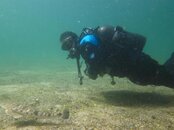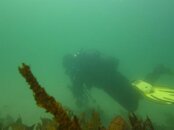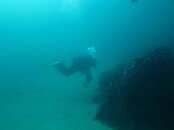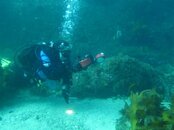I've been wondering myself if the fact that she was an avid photographer had skewed her view on the buddy system. It sounds like she had a habit of drifting away from her buddies. Question is why someone would develop such a habit.

Of course I can't tell about others, but I can describe how my perception and diving changed so far. First of all, I'm not an experienced diver, I started diving four years ago and now have about 230 dives, so I'm comfortable "diving in my limits", but that's it.
First, I realized that diving spots I know, started to feel like cruising in my underwater living room and therefore my awareness for my surroundings (including checking on my regular buddy) isn't as high anymore as it used to be. Same goes for so called easy (shallow) dives or at the end of a dive where you just dive a reef / certain spot for your last 3 to x minutes before you get out of the water. Which doesn't mean that I'm becoming careless or don't pay attention anymore, but the "quality of awareness" is changing. It's a lot more routine and relaxed and easy and nothing that calls for "being prepared in a second in case something is going to happen" anymore. My sensing for potential dangers in these situations is by far not as sharp anymore as it was in the beginning or still is when we're diving in a new area.
Second, I take pictures, so I'm more or less constantly looking for things to photograph which means I'm basically on a hunt. And like every hunter my main concentration is on a potential "prey" (motive) which also focuses my perception. Additionally exploring and taking pictures seems to be my primary motivation (which I always realize when I'm "forced" just to dive, e.g. because of a malfunction of strobe etc.). For me it feels strange to look for nudibranches if you aren't able to document your findings.
Third, since my regular buddy is supporting me in taking pictures I'm usually in the role of the "guide", which means upfront we plan together and then I'm "guiding" our dive and I trust that my buddy comes with me especially if I see something on the way that looks interesting. If it's "off route" we "talk" before I go / lead off, if not, I assume he's with me and check on a regular basis if my assumption is still true. This is not how it should be ideally and since we realized what's happening we decided to work on our buddy system.
When I have been diving with Insta-buddies it's not that I'm not interested or don't want to buddy - just the opposite. But I still would like to take pictures and at the same time I don't want to be a burden for a fellow diver who might be bored by watching me taking the 5th shot of a soft coral. And if I get buddied with an already existing buddyteam, it's more or less me doing a solo dive with a buddyteam nearby. And again it's not because I like it this way, but because I feel a dilemma I can't solve without either limiting me or someone else. This is not easy especially if you are on a dive trip where everyone wants to get the best out of it. So sometimes I'm stuck in the middle of my priorities and then "education" is taking over which means one is looking for a (classical topside) compromise which is: the same-ocean-buddy (we're kind of diving together, but you do your thing and I'm doing mine - no harm).
So to sum it up, yes I somehow can relate and I might have a similar problem / behaviour (working on it).








